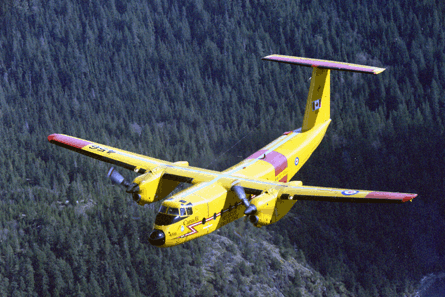Attempts by Canada's Viking Air to restart production of the de Havilland DHC-5 Buffalo utility aircraft could be scuppered by the Canadian government. Ottawa may opt for new aircraft for its future fixed-wing search and rescue requirement and reject the British Columbia-based company's proposal to modernise the country's fleet of ageing twin-engine Buffalos.
The government is preparing to issue a tender for 17 new aircraft and the Alenia C-27J Spartan is hotly tipped as the favourite. "We were working with the Canadian Defence Forces on a modernisation of the Buffalo covering engines and avionics, but in November last year work stopped when they told us they were reviewing their fixed-wing programme," says Viking chief executive David Curtis. "The only complaint they had is the Buffalo is getting too old, but the upgrade will extend the aircraft's life considerably."
 |
|---|
© Viking Air |
Viking says it can build a modernised version of the Buffalo with Pratt & Whitney PW150 engines, glass cockpit and synthetic vision, forward-looking infrared and night vision capability - similar to what is offered in the Twin Otter - for 40% less than the cost of the C-27J. "The Buffalo offers an effective, economical and Canadian solution to the replacement issue and Viking is prepared to work with the government to develop a staged approach to upgrading and modernising the current fleet," says Curtis.
The Buffalo, last produced in 1982, could be back in production within four years, Curtis says and could also be developed for other missions including commercial passenger transport. Canada's current Buffalo search and rescue aircraft - used in the Rocky Mountains and coastal British Columbia - have been in service since the late 1960s. Around 125 of the types were built, of which 50 remain in service.
Alenia is also pledging major industrial benefits for Canada if it wins the contract, Curtis says. These include $3 billion in high-tech aerospace work to Canadian companies and provision of access to further opportunities through parent Finmeccanica.
Viking owns the rights to a number of older de Havilland designs for which it is responsible for worldwide support. The company is no stranger to resurrecting defunct aircraft. In 2007 it restarted production of the DH-6 Twin Otter - last produced in 1988 - delivering the first revamped model equipped with new engines and avionics late last year.
Seven more of the types, dubbed the Series 400 Twin Otter, are scheduled for delivery by the end of the third quarter.
Source: Flight International























